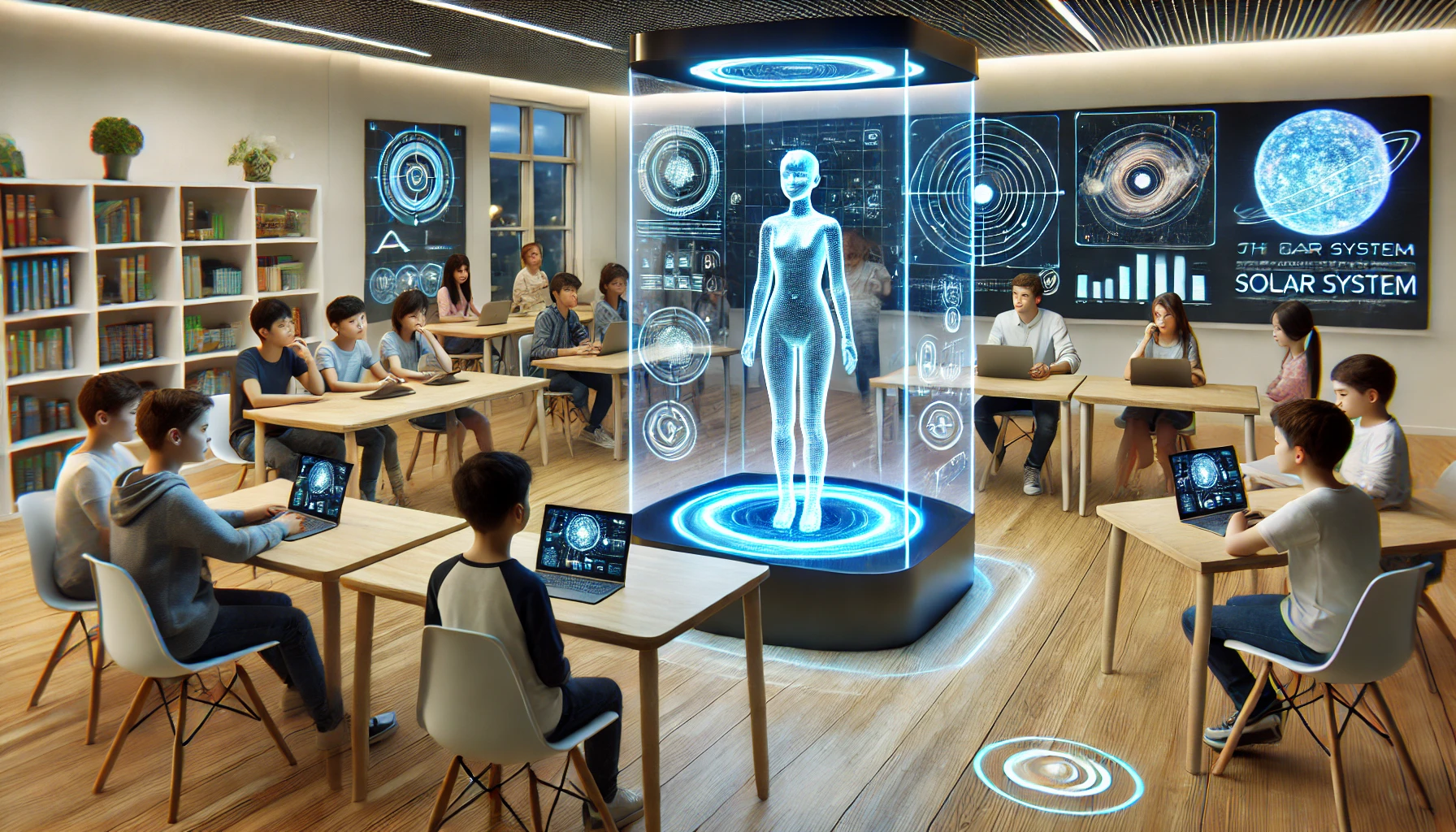Unique Education Opportunities Through Interactive Holographic Learning

Educational institutions face ongoing challenges: engaging diverse learners, explaining complex concepts, and preparing students for future careers that may not yet exist. The Hologram Box, housing AI Holographic Assistants, offers innovative solutions to these challenges by creating interactive, three-dimensional learning experiences. This technology is changing how students interact with educational content while helping educators focus on personalized teaching.
How Hologram Boxes Function in Educational Settings
The Hologram Box serves as the physical housing for AI Holographic Assistants in schools, universities, and training centers. These devices use projection technology to create three-dimensional figures that can interact with students and faculty. The system includes:
When integrated into learning environments, Hologram Boxes create virtual teaching assistants that handle routine tasks while maintaining the connection between students and educational material.
Key Applications in Educational Environments
Interactive Classroom Support
Modern classrooms benefit from supplemental teaching tools. Hologram Boxes enhance instruction by:
This application frees teachers to work with students who need more personalized attention while ensuring all learners have access to information.
Multilingual Learning Support
Educational institutions serve increasingly diverse student populations. Hologram Boxes bridge language gaps by:
For students learning in non-native languages, this capability ensures better comprehension and retention of material.
Information Stations in Libraries and Common Areas
Schools and universities can place Hologram Boxes in shared spaces to serve as information points. These can help students:
This application reduces the administrative burden on library and support staff while making information more accessible to students.
Virtual Laboratory Demonstrations
Science education requires visualization of processes that may be difficult to observe directly. Hologram Boxes enhance science learning by:
These demonstrations increase student understanding while reducing costs and safety concerns associated with physical experiments.
Historical and Cultural Immersion
Humanities education benefits from contextual understanding. Hologram Boxes create immersive learning by:
This technology helps students connect emotionally with historical and cultural content, increasing engagement and retention.
Benefits for Educational Institutions
Enhanced Student Engagement
Modern students have high expectations for interactive learning. Hologram Boxes meet these expectations by:
These elements combine to create higher engagement levels, particularly for concepts that students traditionally find challenging.
Support for Different Learning Styles
Educational research emphasizes the importance of addressing diverse learning preferences. Hologram Boxes support this by:
This flexibility helps institutions meet the needs of all students without requiring multiple versions of the same material.
Teacher Support and Time Optimization
Educators juggle numerous responsibilities beyond direct instruction. Hologram Boxes help by:
By handling these supporting functions, the technology allows teachers to focus on the aspects of education that most require human judgment and connection.
Cost-Effective Access to Specialized Content
Many schools struggle to provide specialized instruction across all subject areas. Hologram Boxes address this by:
This capability helps schools expand their effective course offerings without corresponding increases in staffing costs.
Data-Driven Educational Improvements
Educational institutions increasingly rely on data to refine teaching approaches. Hologram Boxes gather valuable insights by tracking:
This information helps administrators and faculty identify knowledge gaps and refine curriculum to address student needs more effectively.
Implementation Considerations for Educational Institutions
Curriculum Integration
For maximum benefit, Hologram Box content must align with educational objectives. Effective implementations require:
This integration ensures the technology serves educational goals rather than becoming a disconnected novelty.
Strategic Placement
The location of Hologram Boxes significantly impacts their effectiveness. Educational facilities should consider:
Placement should account for both visibility and acoustic conditions that might affect the quality of interaction.
Faculty Training and Support
For successful implementation, educators must understand how to leverage Hologram Boxes effectively:
This preparation ensures the technology enhances rather than disrupts the educational environment.
Accessibility Considerations
Educational technology must serve all learners. Hologram Box implementations should address:
These considerations ensure the technology provides equitable benefits across the student population.
Case Studies: Hologram Boxes in Education
STEM-Focused High School Increases Comprehension
A science-focused high school implemented Hologram Boxes in biology and chemistry classrooms. After one semester, they documented:
The school expanded the program to include physics and earth science classrooms based on these positive results.
University Language Department Expands Offerings
A university language department installed Hologram Boxes programmed with conversation scenarios in multiple languages. They reported:
The department found that students using the holographic conversation partners showed faster progress in speaking proficiency compared to traditional methods alone.
Elementary School Enhances Reading Engagement
An elementary school placed Hologram Boxes in their library to create interactive storytelling experiences. Results included:
Librarians noted that students often requested print books featured in holographic presentations, creating a bridge to traditional reading.
Future Developments for Educational Applications
The integration of Hologram Boxes in education will likely evolve in several directions:
As AI capabilities advance, these systems will increasingly tailor content to individual learning needs while maintaining consistency with educational standards.
Conclusion
The Hologram Box represents a significant advancement in educational technology, bringing AI Holographic Assistants into learning environments where they can support both students and teachers. By providing interactive visualization, multilingual support, and consistent information access, these systems address many of the challenges facing modern educational institutions.
For schools and universities dealing with diverse learner needs, limited resources, and increasing demands for engaging content, Hologram Boxes offer practical solutions that complement traditional teaching methods. The technology preserves the essential human connection in education while expanding what's possible in the classroom.
The future of education includes thoughtful integration of technologies like the Hologram Box—not to replace teachers, but to enhance their capabilities and allow them to focus on the aspects of education that require human judgment, empathy, and inspiration. As these systems evolve, they will become valuable tools in creating more effective, engaging, and equitable learning environments for all students.
Want to get news from the world of holograms?
Sign up to our newsletter.

